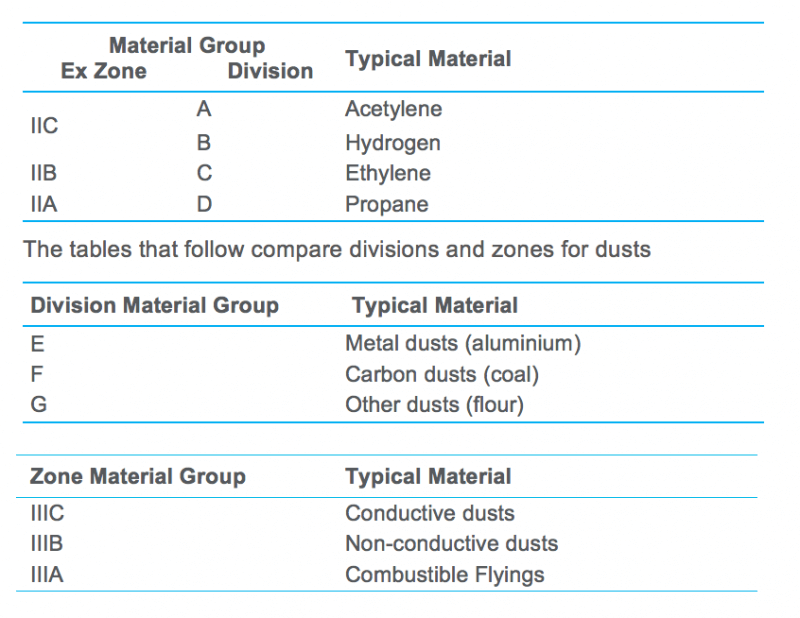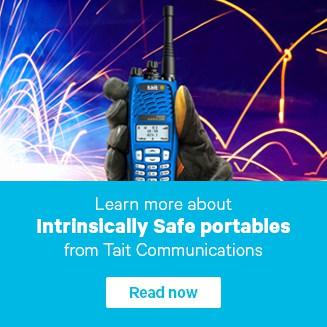Introduction to Intrinsically Safe Radios
Locations and Labels
Matching the location and the label marking
Once we understand Hazardous Location classification and what the equipment markings are, we can compare them to make sure the equipment is suitable for use.
In the North American marking scheme, the division or zone is specifically mentioned, so matching equipment to location is relatively easy. With ATEX and IECEx marking, the zone is indirectly specified, either by the IS Rating or the Equipment Protection Level (EPL). The table below offers some guidance:

Dust ratings are similar; just prefix 2 for the zone and substitute D for G. However ic protection is not available for dust. Tc level (protection by Enclosures standard) could be used instead for Zone 22.

Equipment of a higher rating (say “ib”) can always be used in a safer zone (Zone 2). The same applies for divisions. Division 1 equipment can be used in Division 2.
Material Groups
Matching the IS rating and the zone is only the first part of the process. A location is classified as hazardous because of a particular substance that has the potential to create an explosive atmosphere. The equipment must also be rated for that particular substance.
In Ex marking, substance is denoted by the Gas/Dust group and the subgroup: IIC is Gas subgroup C, which includes hydrogen; IIIC is dust subgroup C, which includes conductive dusts.
Group IIA contains less dangerous gasses, Group IIC contains the most dangerous gasses. Equipment rated IIC can be used in a location with less dangerous gasses. The same logic applies for dusts.
In class and divisions, class denotes the base material:
- Class I = Gas;
- Class II = Dust;
- Class III = Fibers.
The material group identifies the specific materials.

Depending on local regulations, zone equipment may be used in division-classified locations. Equipment rated Zone 0, 1 or 2 may be used in Division 2. Only Zone 0 equipment may be used in Division 1. Division-rated equipment may be used in zone-classified locations. Division 1 equipment may be used in all zones; Division 2 equipment may only be used in Zone 2. It is important to check with your local Regulatory Authority.
 Radio Academy
Radio Academy




